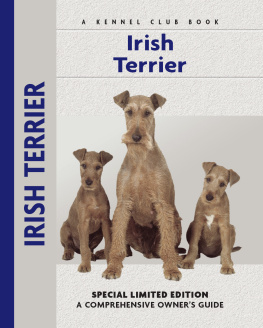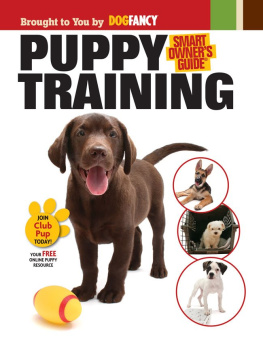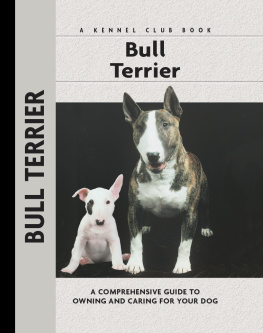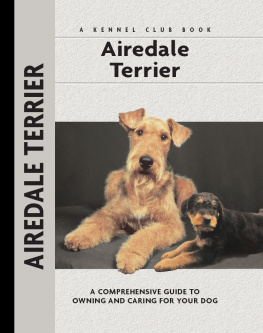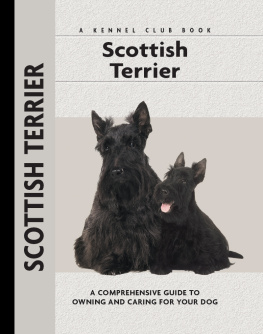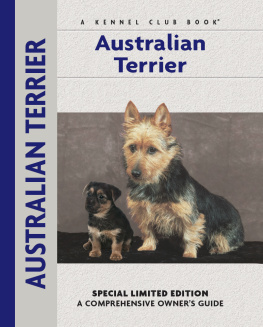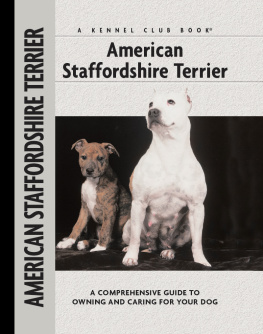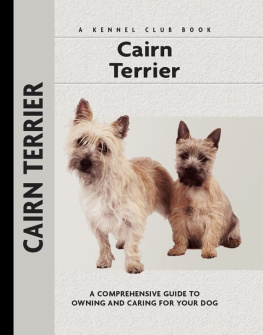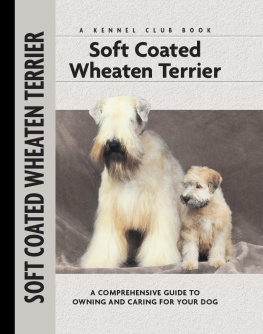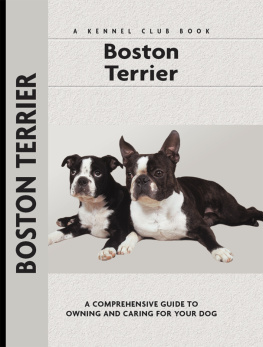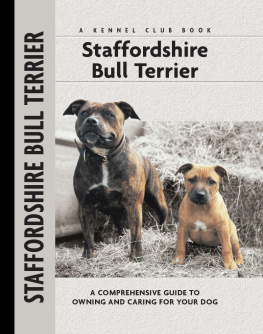Physical Characteristics of the Irish Terrier
(from the American Kennel Club breed standard )
Head: Long, but in nice proportion to the rest of the body; the skull flat, rather narrow between the ears, and narrowing slightly toward the eyes. The foreface must not fall away appreciably between or below the eyes; instead, the modeling should be delicate.
Eyes: Dark brown in color; small, not prominent; full of life, fire and intelligence, showing an intense expression.
Ears: Small and V-shaped; of moderate thickness; set well on the head, and dropping forward closely toward the outside corner of the eye.

Neck: Should be of fair length and gradually widening toward the shoulders; well and proudly carried, and free from throatiness.
Nose: Must be black.
Lips: Should be close and well-fitting, almost black in color.
Teeth: Should be strong and even, white and sound; and neither overshot nor undershot.
Shoulders and Chest: Shoulders must be fine, long, and sloping well into the back. The chest should be deep and muscular.
Color: Should be whole-colored: bright red, golden red, red wheaten, or wheaten. A small patch of white on the chest is permissible but not desirable.
Stern: Should be docked, taking off about one quarter. It should be set on rather high, but not curled. It should be of good strength and substance; of fair length and well covered with harsh, rough hair.
Body: The body should be moderately long. The back must be strong and straight. The loin should be strong and muscular, and slightly arched, the ribs fairly sprung, deep rather than round, reaching to the level of the elbow. The bitch may be slightly longer than the dog.
Hindquarters: Should be strong and muscular; thighs powerful; hocks near the ground; stifles moderately bent.
Coat: Should be dense and wiry in texture, rich in quality, having a broken appearance, but still lying fairly close to the body, the hairs growing so closely and strongly together that when parted with the fingers the skin is hardly visible; free of softness or silkiness, and not so long as to alter the outline of the body, particularly in the hindquarters.
Size: The most desirable weight in show condition is 27 pounds for the dog and 25 pounds for the bitch. The height at the shoulder should be approximately 18 inches.
Feet and Legs: The feet should be strong, tolerably round, and moderately small; toes arched and turned neither out nor in, with dark toenails. Legs moderately long, well set from the shoulders, perfectly straight, with plenty of bone and muscle; the elbows working clear of the sides; pasterns short, straight, and hardly noticeable.

Contents

Uncover the mystery of the Irish Terriers origin, from the breeds generic and humble beginnings to its establishment and acceptance as a pure-bred dog. Did the breed derive from the giant Wolfhound and how colorful was the terriers past? Find out about early dogs, breeders, service work and what Billy Graham has to do with this earthdog!

Heads up: enter the Daredevil of the canine world, the Irish Terrier. Meet this boisterous, independent and entertaining terrier whose owners claim that this is a true dog among dogs, unrivaled by other inferior terriers. Are you the right owner for this possessive, amazingly loyal and slightly stubborn red dervish?
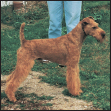
Learn the requirements of a well-bred Irish Terrier by studying the description of the breed as set forth in the American Kennel Clubs breed standard. Both show dogs and pets must possess key characteristics as outlined in the breed standard.
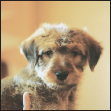
Be advised about choosing a reputable breeder and selecting a healthy, typical puppy. Understand the responsibilities of ownership, including home preparation, acclimatization, the vet and prevention of common puppy problems.
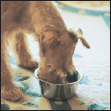
Enter into a sensible discussion of dietary and feeding considerations, exercise, grooming, traveling and identification of your dog. This chapter discusses Irish Terrier care for all stages of development.
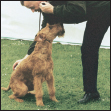
By Charlotte Schwartz
Be informed about the importance of training your Irish Terrier from the basics of house-training and understanding the development of a young dog to executing obedience commands (sit, stay, down, etc.).

Discover how to select a qualified vet and care for your dog at all stages of life. Topics include vaccinations, skin problems, dealing with external and internal parasites and common medical and behavioral conditions.
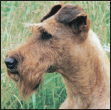
Consider the care of your senior Irish Terrier, including the proper diet for a senior. Recognize the signs of an aging dog, both behavioral and medical; implement a special-care program with your vet and become comfortable with making the final decisions and arrangements for your senior Irish Terrier.
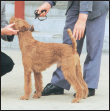
Enter the world of showing dogs. Learn about the American Kennel Club, the different types of shows and the making of a champion, and find out about agility and obedience trials and more.
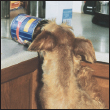
Learn to recognize and handle behavioral problems that may arise with your Irish Terrier. Topics discussed include separation anxiety, aggression, barking, chewing, digging, begging, jumping up, etc.
K ENNEL C LUB B OOKS I RISH T ERRIER
ISBN 13: 978-1-59378-339-6
eISBN 13:978-1-62187-023-4
Copyright 2003 Kennel Club Books An Imprint of I-5 Press A Division of I-5 Publishing, LLC
3 Burroughs, Irvine, CA 92618 USA
Cover Design Patented: US 6,435,559 B2 Printed in South Korea
All rights reserved. No part of this book may be reproduced in any form, by photostat, scanner, microfilm, xerography or any other means, or incorporated into any information retrieval system, electronic or mechanical, without the written permission of the copyright owner.
Next page
